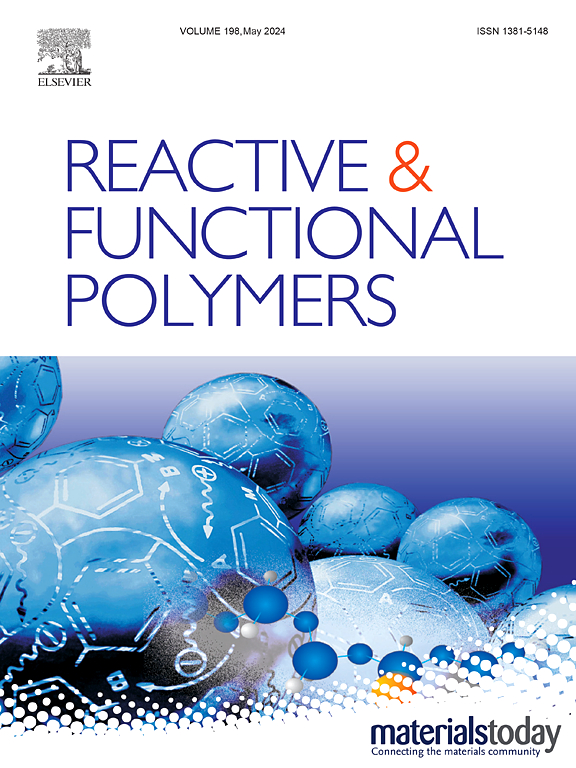isatin基聚合物的合成及氨基酸检测用纳米纤维膜的制备
IF 5.1
3区 工程技术
Q1 CHEMISTRY, APPLIED
引用次数: 0
摘要
荧光聚合物由于其独特的光响应性、优异的可加工性、热稳定性和机械稳定性,是柔性传感器制备领域的有力竞争者。为开发荧光聚合物在氨基酸检测中的应用,合成了以isatin为基础的荧光聚合物。isatin基团的大位阻使聚合物具有良好的溶解性,因此可以通过静电纺丝将样品加工成纳米纤维(80-450 nm)。聚合物膜在紫外光激发下呈现出明亮的黄绿色荧光。在电纺丝膜中掺杂TiO2后,样品的水接触角从127°降低到64°。纤维间的间隙和膜的亲水性有利于氨基酸溶液的渗透。当目标物浓度为0.03 mg/mL时,可进行鉴定。色氨酸由于π-π*堆积导致膜的荧光猝灭。然而,酪氨酸的显著氢键增强了膜的光致发光。这项工作为便携式和可视化检测氨基酸提供了一种有效的策略。本文章由计算机程序翻译,如有差异,请以英文原文为准。

Synthesis of isatin based polymers and preparation of the nanofiber membrane for amino acid detection
Fluorescent polymers are strong competitors in the preparation of flexible sensors due to their unique photoresponsivity, excellent processability, thermal stability, and mechanical stability. For developing the application of fluorescent polymers in the detection of amino acid, the polymers based on isatin were synthesized. The large steric hindrance of isatin groups endows the polymer with excellent solubility, so the samples could be processed into nanofibers (80–450 nm) by electrospinning. The polymer membranes exhibited bright yellow-green fluorescence at UV excited. After doping TiO2 into electrospun membranes, the water contact angles of samples were reduced from 127° to 64°. The interstice between fibers and the hydrophilicity of the membrane facilitated the penetration of the amino acid solutions. It could be identified when the concentration of the targets were 0.03 mg/mL. The tryptophan caused fluorescence quenching of membrane due to the π-π* stacking. However, the significant hydrogen bonding of tyrosine enhanced photoluminescence emission of membrane. This work provides an effective strategy for portable and visual detection of amino acids.
求助全文
通过发布文献求助,成功后即可免费获取论文全文。
去求助
来源期刊

Reactive & Functional Polymers
工程技术-高分子科学
CiteScore
8.90
自引率
5.90%
发文量
259
审稿时长
27 days
期刊介绍:
Reactive & Functional Polymers provides a forum to disseminate original ideas, concepts and developments in the science and technology of polymers with functional groups, which impart specific chemical reactivity or physical, chemical, structural, biological, and pharmacological functionality. The scope covers organic polymers, acting for instance as reagents, catalysts, templates, ion-exchangers, selective sorbents, chelating or antimicrobial agents, drug carriers, sensors, membranes, and hydrogels. This also includes reactive cross-linkable prepolymers and high-performance thermosetting polymers, natural or degradable polymers, conducting polymers, and porous polymers.
Original research articles must contain thorough molecular and material characterization data on synthesis of the above polymers in combination with their applications. Applications include but are not limited to catalysis, water or effluent treatment, separations and recovery, electronics and information storage, energy conversion, encapsulation, or adhesion.
 求助内容:
求助内容: 应助结果提醒方式:
应助结果提醒方式:


